New to Greenfield, botanist Claire Hilsinger helping root out invasive species
|
Published: 12-25-2023 5:00 PM
Modified: 01-16-2024 6:10 PM |
Claire Hilsinger moved to western Massachusetts in August, but is already making positive impacts here. A professional botanist who delineates wetlands and does rare plant surveys, Hilsinger helps advise on projects like bridge replacements and highway widening. “They need qualified people to look around and see if sensitive habitats and species are involved,” Hilsinger said.
When not working her day job, and not busy singing with the Pioneer Valley Symphony Chorus, Hilsinger, 44, is willing to lend a hand. In fact, she brings both hands and her whole heart to a volunteer project mitigating invasive plant species at the Green River Swimming Area. Hilsinger expresses passion for a wide range of disciplines, and those who meet one of Greenfield’s newest residents may find themselves eager to learn more about topics they might not have previously considered, like the fact that ants can be considered cute, and why lizard poop is fascinating.
During high school in her central Massachusetts hometown of Spencer, Hilsinger “was one of the art kids. I started out in college as a fashion design major. That seems funny to me now, because my life has gone in completely different directions.” Hilsinger moved frequently and embraced many adventures. After switching to biology, Hilsinger took a course focusing on field techniques, ecological field research, and methodology. “I got to spend three weeks in southeastern Oregon, in part of the Great Basin Desert,” she said, “a remote and magical area with canyonlands.” The geothermal activity of the sagebrush desert fascinated Hilsinger. “There were hot springs and several types of lizards.”
When discussing lizards, Hilsinger becomes animated. “We studied habitat, food preferences, patterns, movement, home ranges — all sorts of behavioral data. Our class had two groups: some studied Leopard lizards, and the rest of us studied Horned lizards. We collected lizard poop to determine what they were eating.”
This led to epiphanies about ants: “Ants are the lizards’ main food source,” said Hilsinger, “and my job was to determine which species of ants Horned lizards eat. Picking through lizard poop using a dissecting scope, I saw that the ants’ heads were still intact. When you look at ant heads closely for long periods of time, they actually start to look cute.”
Trust me, dear readers, we’ll soon get to how Hilsinger’s expertise benefits our local area, but first, a few words about collecting lizard poop, because this isn’t something you hear every day: “When you grab a lizard and turn it upside down, it gets really calm,” Hilsinger said. “When a lizard is ready to poop, you can feel it in the colon, and you can squeeze a little bit out. Sometimes a tiny parasite comes out, too, because a particular species of nematode lives in Horned lizards’ stomachs, and they mate there. Once the female worm is full of eggs, she exits the lizard and dies on the desert floor, but her eggs are still viable. A foraging ant comes along, finds this big juicy dead worm, brings it back to the colony, feeds it to baby ants, and that’s how ants become infected with larval stage nematodes. Which, of course, are then eaten by Horned lizards.”
This work was vital, said Hilsinger, because “up until that point, there was little research of this kind. Anyway, that’s how I got interested in parasitology, the study of parasites. Seeing these lizards with parasites that hadn’t been studied was the coolest thing ever.” There’s something about Hilsinger’s enthusiasm that could actually convince one to grab a lizard, give it a squeeze, and get down and dirty with nematodes.
Back to Greenfield. Hilsinger had the good fortune of meeting Dorothea Sotiros, one of her new neighbors. (Sotiros has appeared in the Recorder numerous times due to her energetic participation in support of pollinators, lawn eradication, all-season gardening, educating children, and many other community-enhancing activities.)
Article continues after...
Yesterday's Most Read Articles
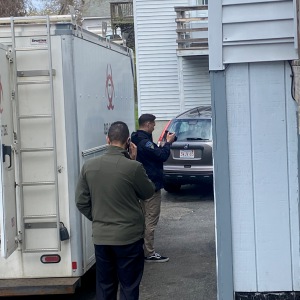 Authorities ID victim in Greenfield slaying
Authorities ID victim in Greenfield slaying
 State records show Northfield EMS chief’s paramedic license suspended over failure to transport infant
State records show Northfield EMS chief’s paramedic license suspended over failure to transport infant
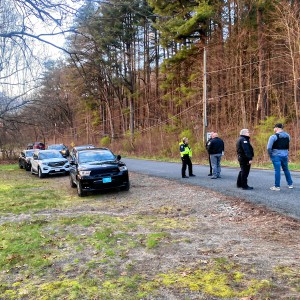 Police report details grisly crime scene in Greenfield
Police report details grisly crime scene in Greenfield
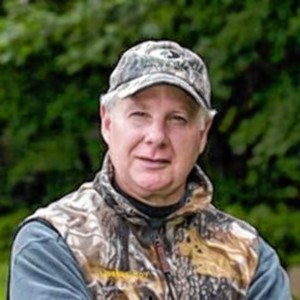 On The Ridge with Joe Judd: What time should you turkey hunt?
On The Ridge with Joe Judd: What time should you turkey hunt?
 ‘I have found great happiness’: The Rev. Timothy Campoli marks 50 years as Catholic priest
‘I have found great happiness’: The Rev. Timothy Campoli marks 50 years as Catholic priest
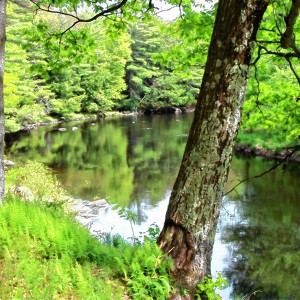 Formed 25,000 years ago, Millers River a historic ‘jewel’
Formed 25,000 years ago, Millers River a historic ‘jewel’
“Dorothea told me about a project at the Green River Swimming Area focusing on supporting native plants by mitigating invasive species,” Hilsinger said. “I wanted to learn more, because I strongly support native biodiversity. When invasives come in, they crowd out native plants, which leads to monoculture. It’s important to address that when we can.”
Hilsinger explained that “invasives move in quickly precisely because they’re non-native. Plants in native habitats evolve in an ecosystem with checks and balances like herbivores, diseases, and other plants that can compete. But when aggressive non-natives are brought to an area, those checks aren’t in place.”
Sotiros put Hilsinger in touch with project coordinator WistyRorabacher, another community luminary when it comes to protecting natural habitats and sharing knowledge. Rorabacher was thrilled about the connection. “Claire is invaluable,” she said, “and a very good teacher. We all count on her so much.” Rorabacher said the Green River Project is evolving: “Initially, we planned to work on removing knotweed from the northern end of the swimming area; it took over two years just to get permission to do what’s required.” Rorabacher and her partner, Judy Draper, got busy, and people who witnessed the couple working on a 20’ by 25’ experimental plot of knotweed expressed interest in helping.
Hilsinger explained why knotweed is an issue.
“While many invasive plants are spread by animals consuming and spreading seeds, Japanese knotweed is different in that it does not produce viable seed. It is dispersed through the transport and re-establishment of vegetative bits such as roots or shoots. The plant disperses when pieces break off and float down river or when contaminated soil is moved from one place to another.”
She said knotweed fills in quickly and destabilizes banks because the plant is so brittle, leading to significant erosion.
“Any little bit of root can establish a new colony,” she said. “When this happens, the roots might go down 10 feet and can’t be dug out or pulled out. You just have to cut it over and over. The only way to stay positive is to focus on a particular area.”
That’s what Rorabacher and Draper did.
“We knew that if you cut knotweed when it’s very young, depriving the plant of leaves to feed roots, the roots will starve and eventually die,” said Rorabacher. “When a few more people got involved, including Claire, things really got rolling. Claire’s done invasive removal before, so we really lean on her expertise.” With Hilsinger’s guidance, the group widened their focus to include other invasives. including multiflora rose and bittersweet.
The project involves “huge physical labor,” Rorabacher said. “We cut, chop, and drag big stalks. It’s so much fun. We’re going to open it up to the broader community soon, with meetings to explain what we’re doing. It would be great to involve 100 people, or even more, working in teams at different times.”
Rorabacher continued, “We have this natural gem right in Greenfield, and we need to protect it. The biodiversity of the Green River Swimming Area is astounding. And with Claire Hilsinger on board, we can’t lose.”
Hilsinger shares Rorabacher’s enthusiasm: “Even after working for just a couple of hours, the landscape looks different. It’s rewarding and satisfying. This will take multiple years, because when we cut invasives back, they resprout multiple times. But there’s an immediate sigh of relief when we make progress.” She said that “everyone can become familiar with identifying invasives, and become aware that invasives are not great for native habitat.”
The Green River Swimming and Recreation Area is “rich in diversity, including ephemerals,” Hilsinger said. “It should be preserved. Our project exemplifies the power we have when just two or three of us can make a big difference in just a couple of hours.” She described one spot: “A few weeks ago, we worked on a tangled mass of multiflora rose and bittersweet which made it impossible to see the river. Before long, we created a break in the hedgerow. That’s progress!”
Hilsinger plans to stay in the area. “I’m putting down roots,” she said. “I was drawn here by the region’s music and arts scene, as well as its natural beauty.”
Readers interested in getting involved with the Green River Swimming Area invasives mitigation project can contact WistyRorabacher at wistyrorabacher28@gmail.com.
Eveline MacDougall is the author of “Fiery Hope” and a musician, artist, and mom. Readers may contact her at eveline@amandlachorus.org.
An earlier version of this article incorrectly explained how Japanese knotweed is spread. It is dispersed through the transport and re-establishment of vegetative bits such as roots or shoots. The plant disperses when pieces break off and float down river or when contaminated soil is moved from one place to another.”

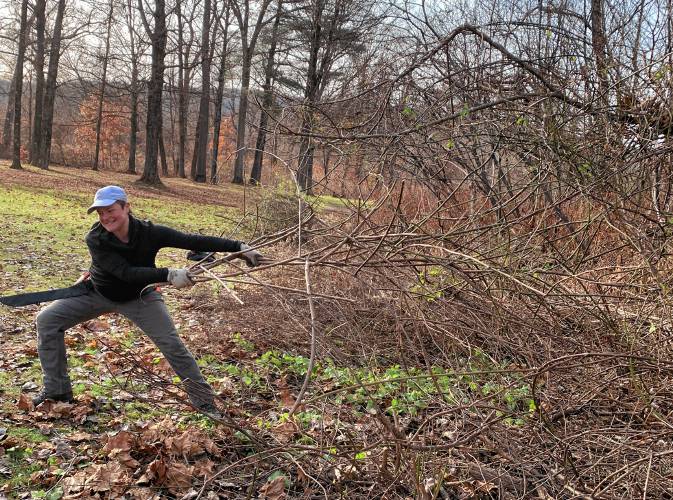
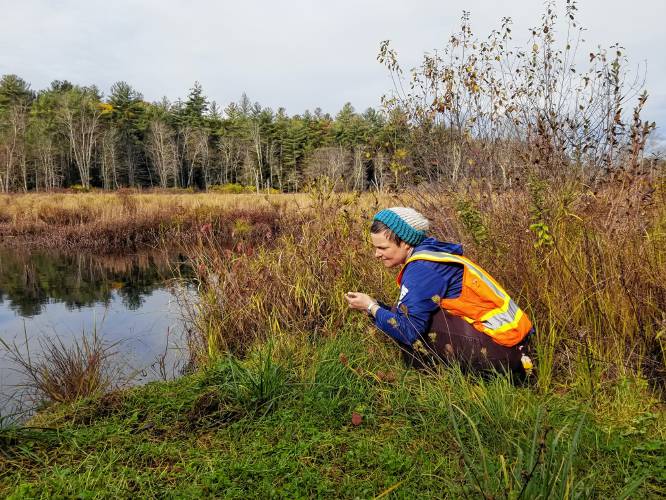
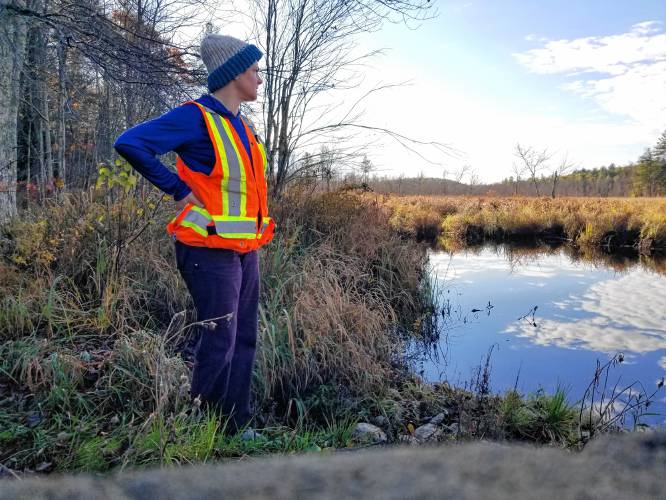
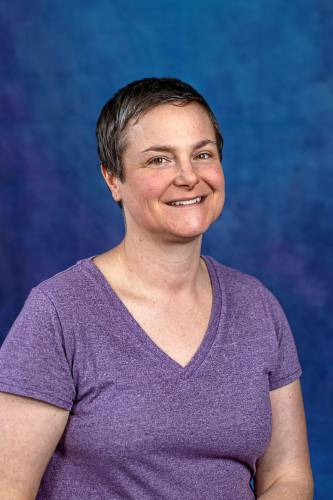
 Speaking of Nature: Indulging in eye candy: Finally, after such a long wait, it’s beginning to look like spring is here
Speaking of Nature: Indulging in eye candy: Finally, after such a long wait, it’s beginning to look like spring is here Celebrating ‘Seasonings’: New book by veteran preacher and poet, Allen ‘Mick’ Comstock
Celebrating ‘Seasonings’: New book by veteran preacher and poet, Allen ‘Mick’ Comstock Faith Matters: How to still the muddy waters of overthinking: Clarity, peace and God can be found in the quiet spaces
Faith Matters: How to still the muddy waters of overthinking: Clarity, peace and God can be found in the quiet spaces A time for every purpose under heaven: Free sing-a-long Pete Seeger Fest returns to Ashfield, April 6
A time for every purpose under heaven: Free sing-a-long Pete Seeger Fest returns to Ashfield, April 6
